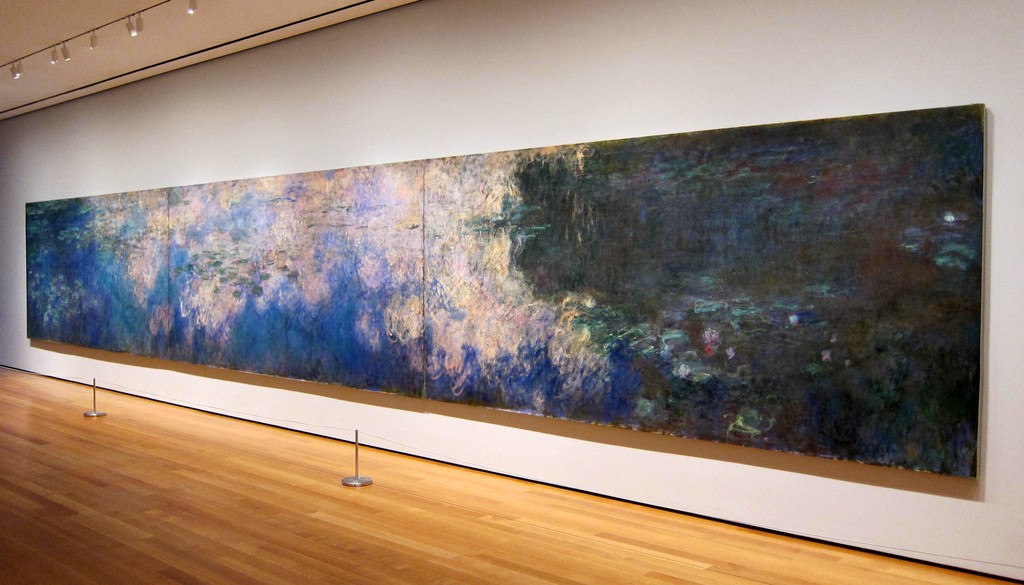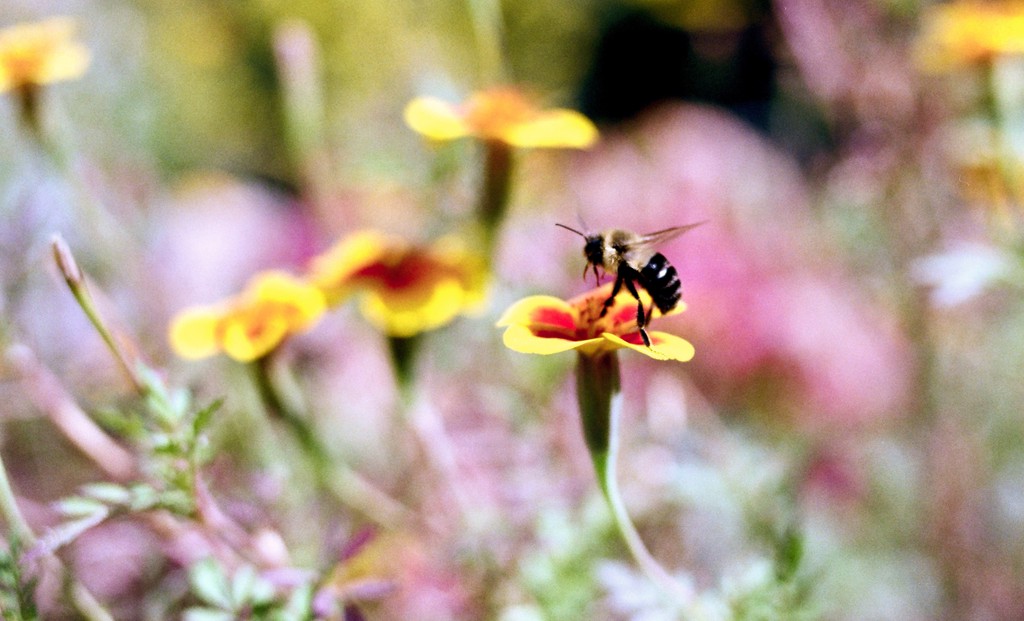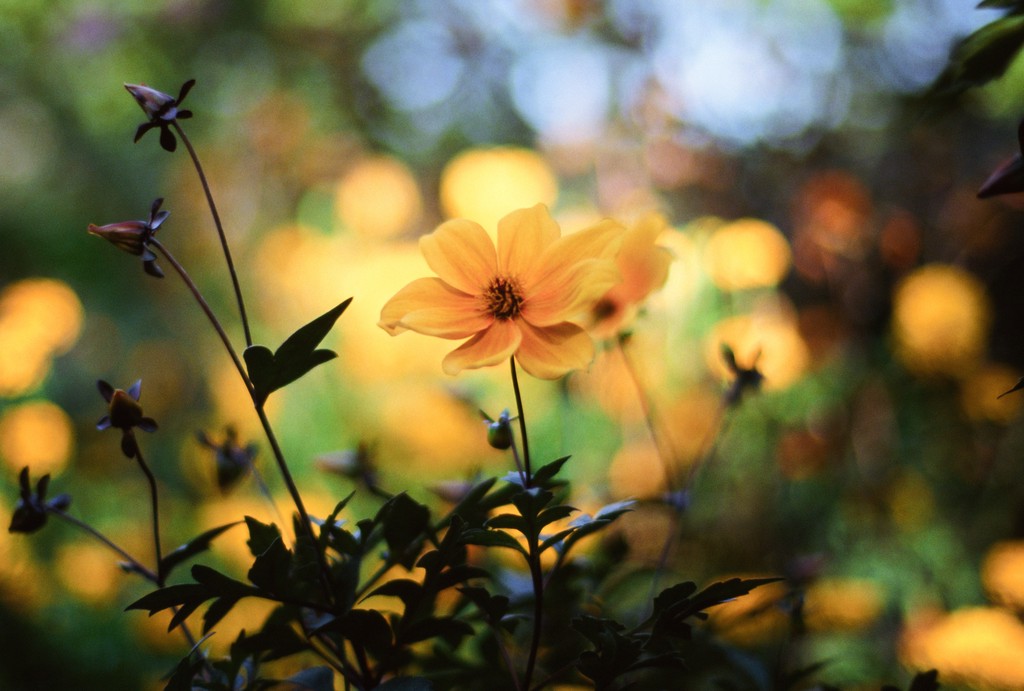On Beauty
Table of Contents
I, like most people, have a great appreciation for beauty in all its forms. When we see something beautiful, it can trigger an emotional response that transcends mere recognition—be it a sunset painting the sky in impossible colors, a face that catches our eye in a crowd, a landscape that makes us pause mid-stride, or a painting that captures that ineffable quality of light. We’re naturally drawn to beauty, which begs the question: is it beautiful because we are drawn to it, or are we drawn to it because it’s beautiful?
We express our own forms of beauty in various ways: making art is perhaps the most obvious. Another is fashion—the way we present the canvas of our body to the world through color, texture, and form. We can express beauty through movement, either in our everyday gestures or as performance. Even sports, not typically categorized as beautiful, reveal moments of extraordinary grace—a diver arcing through the air, a basketball player suspended in flight, a dancer-like gymnast defying gravity.
Natural beauty is probably what we humans emulate most. We copy much of what we see in nature and incorporate it into our own creations: take, for example, the simple image of a flower. You’ll find floral patterns adorning nearly everything from clothes to carpets, wallpaper to airplanes, and everything in between. The flower, a humble symbol of beauty, exemplifies one of nature’s most carefully designed works of art—evolved not for human appreciation but for the practical purpose of reproduction, yet speaking to us on a level deeper than words.
The Concept of Beauty #
What is beauty, exactly? One definition might be as simple as “something that I like looking at,” or “something that appears pleasing to me.” Of course, beauty isn’t limited to what you can see—it applies to any of the senses, or even to thoughts, words, and expressions. Poetry can be beautiful, not because of how the letters are arranged on the page, but for the emotional resonance carried within the confines of its form. Music can be beautiful, though we can’t touch, smell, or see it—only feel its vibrations move through us. Flowers are visually beautiful, smell beautiful, and attract beautiful insects, like the bumblebee with its impossibly small wings carrying its round form through the air.
From an evolutionary perspective, beauty makes some sense. We are drawn to things that are beautiful, and beautiful things can be good for us. In terms of mating, attributes of fitness and health are often expressed as being beautiful—symmetrical features, clear skin, bright eyes—all signaling genetic quality and reproductive fitness. Many things we like to eat are quite beautiful, such as a tomato at peak ripeness. What is it, exactly, about the tomato that is beautiful? Hard to say, other than “it just is.” Perhaps it’s the vibrant shade of red, or the way light catches and reflects off its smooth skin, or its perfect roundness heavy in the palm. I suppose it’s all those elements combined into a whole greater than its parts.
Some aesthetic preferences seem universal. People who are judged as being beautiful are generally seen as beautiful across different cultures, although different societies emphasize different aspects of beauty to varying degrees. Beautiful scenery requires no cultural translation: everyone loves a good sunset on the beach, where the sky becomes a canvas of oranges and pinks reflected in the rippling water. But why does the sunset look so good exactly? We can describe the attributes that make a sunset what it is, but those things on their own aren’t anything but attributes—it’s the whole sunset experience that makes it what it is. It’s the feeling of warmth on your skin, the sound of gentle waves, the cool breeze that carries the scent of salt water, all wrapped together in a way that words struggle to do justice to.
How Our Brains Process Beauty #
When we encounter something beautiful—whether a painting, a melody, or a face—our brains respond in remarkable ways. Beauty isn’t just in the eye of the beholder; it’s also in the neural circuits of the beholder.
Research in neuroaesthetics—the study of how our brains respond to art and beauty—has revealed that experiencing beauty activates the brain’s reward centers, particularly the medial orbitofrontal cortex (mOFC), which processes pleasure and reward.12 When you see something you find beautiful, your brain essentially gives you a little hit of dopamine, the same neurotransmitter involved in other pleasurable experiences like eating chocolate or falling in love. This activation of the mOFC seems to be a common neural signature for aesthetic appreciation across different types of stimuli, from visual art to music, and even mathematical elegance.3
Different forms of beauty activate the same brain regions. Whether you’re gazing at a stunning landscape, listening to a moving piece of music, or even contemplating an elegant mathematical equation (if you’re mathematically inclined), the medial orbitofrontal cortex lights up in brain scans. This suggests that beauty, regardless of its source, shares a common neural signature—a kind of “beauty circuit” in our brains.
Of course, this doesn’t mean beauty is entirely objective. While certain aspects of beauty perception appear somewhat universal—most cultures appreciate facial symmetry, which is often linked to evolutionary indicators of health and genetic fitness45—our individual experiences significantly shape what we find beautiful. Cross-cultural studies have indeed found significant agreement on facial attractiveness, suggesting some universal standards, but also acknowledge cultural variations6. When you view something you consider beautiful, your brain integrates sensory information with your personal history, cultural background, and current emotional state. This integration happens in regions like the default mode network (DMN), which connects external stimuli with our internal sense of self and is involved in self-referential thought and introspection during aesthetic experiences78.
This might explain why beauty can feel so personally meaningful. When something strikes us as beautiful, it’s not just registering as a pleasant visual or auditory pattern—it’s connecting with our identity, memories, and values. That sunset isn’t just colorful; it reminds you of childhood vacations. That song isn’t just melodic; it takes you back to a significant moment in your life.
The brain’s beauty-processing also exhibits adaptability. Research has shown that repeated exposure to certain aesthetic stimuli can alter our brain’s response to them—sometimes enhancing appreciation (as when we grow to love a initially challenging piece of music), and sometimes diminishing it (as when a once-favorite song becomes overplayed). This neural plasticity explains why our sense of beauty evolves throughout our lives.
Perhaps most remarkably, studies have found that contemplating beauty activates not just reward circuits but also areas involved in meaning-making and self-reflection. This suggests that experiencing beauty isn’t merely a sensory pleasure—it’s a deeply human way of making sense of our existence and our place in the world.
The Double-Edged Sword of Ideals #
While the pursuit and appreciation of beauty can be a source of joy and inspiration, societal beauty standards can also exert immense pressure, leading to a “dark side” of beauty. These standards, often narrow and unrealistic, are perpetuated by media and culture, and can vary significantly across different societies and eras910.
The pressure to conform to these ideals can have significant negative impacts on mental health. Constant exposure to images of “perfection” can lead to low self-esteem, body dissatisfaction, and a heightened risk of developing eating disorders as individuals strive to match often unattainable standards11. This is particularly prevalent where thinness is valorized or specific facial features are idealized. The psychological toll can also manifest as anxiety, depression, and social isolation, as individuals may feel inadequate or ashamed if they don’t measure up12. Social media, with its curated feeds and constant stream of idealized images, often amplifies these pressures, creating a breeding ground for social comparison and its detrimental effects on body image13.
Beauty in the Digital Mirror #
Technology has further complicated our relationship with beauty. Social media platforms, photo editing apps, and artificial intelligence now play a significant role in shaping and often distorting our beauty perceptions.
The rise of sophisticated AI-powered filters allows users to instantly alter their appearance in photos and videos, often conforming to a specific, homogenized look sometimes dubbed the “Instagram Face”—characterized by poreless skin, cat-like eyes, and full lips14. While initially fun, the constant use of these filters can negatively impact self-esteem and body image, as the filtered self becomes an idealized, yet unrealistic, version to live up to. Studies show that a high percentage of young women use filters and report feeling pressure to look a certain way online, with many feeling worse about their real-life appearance as a result15. This phenomenon has even led to “Snapchat dysmorphia,” where individuals seek cosmetic surgery to resemble their filtered selfies16.
Beauty and Art #
Art is often thought of as being about beauty. We typically think of art as beautiful things. However, this is a very narrow view: much art is less about beauty and more about expressing feeling or challenging perception. Beauty is, in a way, a feeling: one of simply enjoying and appreciating the thing, whatever it may be.

Claude Monet, Reflections of Clouds on the Water-Lily Pond, c. 1920, 200 × 1276 cm17
Monet’s dedication to capturing the ephemeral beauty of his water garden at Giverny was profound. Over the last thirty years of his life, he painted around 250 works in his “Water Lilies” series. So engrossed was he in this subject that after World War I, he had a new, larger studio built specifically to accommodate the creation of monumental canvases depicting his beloved lilies. He later donated 22 of these vast paintings to the French state, and they now form the breathtaking panorama at the Musée de l’Orangerie in Paris, enveloping visitors in his watery, floral world. His commitment persisted even as his eyesight failed due to cataracts, a challenge that subtly shifted the colors and details in his later pieces, adding another layer to his exploration of perception and light.
Some art tries to capture beauty. Or the art uses beauty to express its message, as a sort of delivery mechanism for an idea, a meme. A painting of a war scene might be technically beautiful—the way light is captured, the composition, the color harmony—while depicting something horrific, creating a tension that forces us to confront difficult truths.
Good art tends to be more than just the beauty aspect: the artist uses beauty to express something that, for them, can only be expressed through the art. The art is the medium, and as Marshall McLuhan famously observed, the medium is the message. When Michelangelo carved David from marble, he wasn’t just creating something beautiful—he was speaking about human potential, divine creation, and the Renaissance ideals of his time.
Impermanence #
The Japanese idiom mono no aware translates to “the pathos of things,” describing a sort of fleeting beauty and the poignant sadness of knowing that everything dies. The cherry blossom—Japan’s national flower—embodies this concept perfectly. Its beauty is heightened by its brief blooming period; the flower will eventually wilt, its petals will fall, and it will cease to exist as it was.
So much of what we think of as beauty is less a specific thing, but rather a way we feel in a particular moment. It’s why people love to share their smartphone sunset photos, even knowing they won’t have the same meaning to anyone else. While you can see the beauty in that particular sunset because you were there and felt it, to anyone else it might just be another sunset photo clogging up their feed.
What’s beautiful to you yesterday might not be beautiful to you today. Our tastes change over time: perhaps you used to love the taste of wine, and maybe today the thought of it makes you feel ill. People we previously saw as unattractive might suddenly look beautiful once we see a different side of them—their kindness, their humor, their passion. People who we once revered or admired for their beauty might start to look ugly once we glimpse their darker sides.
Beauty is, in this sense, never truly universal or permanent. Beauty is tethered to a time and a place, a particular observer in a particular moment.
Corrupting Beauty #
Beauty is sometimes used as a way to manipulate people. In advertising, beautiful things are used to imply that by purchasing some good or service, you will capture or experience the beauty expressed in the advertisement. A perfume ad shows a couple running through a Parisian garden at sunset—the message being that this scent will somehow transport you there, make you feel like you’re smelling the flowers, make you that beautiful, bring you that love. A luxury car commercial frames the vehicle against a pristine mountain landscape, suggesting that ownership will connect you to something wild and free.
For artists, commercial work isn’t necessarily a bad thing—it provides a way to use their skills to survive. But when beauty is hijacked solely to sell a product, something fundamental changes in our experience of it. The artwork is no longer primarily about the beauty itself, but about creating want, lack, desire. It becomes a tool rather than an end in itself. The sunset is beautiful until it becomes a backdrop for selling cruise packages; the human form is beautiful until it becomes nothing more than a way to sell gym memberships or diet pills.
Imperfect Beauty #
The Japanese, once again, have another concept which describes a certain beauty in the flaws of things. Wabi-sabi, which might translate to “subdued, austere beauty,” describes the acceptance of imperfection. It celebrates the cracked teacup, the weathered wood, the asymmetrical pottery—finding elegance in age and wear rather than newness and perfection. Once we understand that nothing is perfect, there’s a certain beauty to the imperfections themselves. In some ways, perfection can feel sterile and unapproachable because it’s not real, not in nature at least. Perfection is unnatural.
This is why hand-crafted items often appeal to us more than mass-produced ones—the slight variations and “mistakes” mark them as human-made, connecting us to their creator. It’s why we might prefer the slightly off-key passion of a live performance to a technically perfect studio recording. It’s why many find beauty in wrinkles that tell stories of laughter, or scars that speak of lives fully lived.
Finding the Beauty #
I believe there’s beauty to be found in nearly everything. It’s less about the object itself, and more about our perspective and willingness to see. Finding the silver lining, so to speak. I think that everyone is beautiful, and cultivating an appreciation for beauty is something we should all find space for.
Perhaps the most beautiful thing of all is the human capacity to find and create beauty—even in difficult circumstances, even in imperfection, even in what others might overlook. It’s our superpower: this ability to be moved by a chord progression, to gasp at a sunset, to feel our hearts lift at the sight of a stranger’s smile. In a world that can sometimes feel harsh and divided, our shared appreciation for beauty might be one of the threads that still connects us all.
Yang, X., Li, J., & Zhang, J. (2022). The neural determinants of beauty. Neuroscience & Biobehavioral Reviews, 135, 104580. https://doi.org/10.1016/j.neubiorev.2022.104580 ↩︎
Ishizu, T., & Zeki, S. (2011). Toward A Brain-Based Theory of Beauty. PLoS ONE, 6(7), e21852. https://doi.org/10.1371/journal.pone.0021852 ↩︎
Zeki, S., Romaya, J. P., Benincasa, D. M. T., & Atiyah, M. F. (2014). The experience of mathematical beauty and its neural correlates. Frontiers in Human Neuroscience, 8. https://doi.org/10.3389/fnhum.2014.00068 ↩︎
Perrett, D. I., Burt, D. M., Penton-Voak, I. S., Lee, K. J., Rowland, D. A., & Edwards, R. (1999). Symmetry and Human Facial Attractiveness. Evolution and Human Behavior, 20(5), 295-307. ↩︎
Rhodes, G. (2006). The evolutionary psychology of facial beauty. Annual Review of Psychology, 57(1), 199-226. https://doi.org/10.1146/annurev.psych.57.102904.190208 ↩︎
Little, A. C. (2014). Facial Attractiveness. Scholarpedia, 9(1), 41361. https://doi.org/10.1002/wcs.1316 (referencing studies by Cunningham et al., 1995 and others on cross-cultural agreement) ↩︎
Vessel, E. A., Starr, G. G., & Rubin, N. (2012). The brain on art: intense aesthetic experience activates the default mode network. Frontiers in Human Neuroscience, 6. https://doi.org/10.3389/fnhum.2012.00066 ↩︎
Cela-Conde, C. J., García-Prieto, J., Ramasco, J. J., Miró, C., Gisbert, R.N.E., Munar, E., & Nadal, M. (2013). Dynamics of brain networks in the aesthetic appreciation. Proceedings of the National Academy of Sciences, 110(Supplement 2), 10454-10461. https://doi.org/10.1073/pnas.1302856110 ↩︎
Etcoff, N. (1999). Survival of the Prettiest: The Science of Beauty. Anchor Books. ↩︎
Swami, V. (2015). Cultural influences on body size ideals: Examining the effects of media and globalisation. In Body Image and Beauty Standards (pp. 43-59). Palgrave Macmillan. ↩︎
Seladi-Schulman, J. (2023, December 21). What is the connection between beauty standards and mental health? Medical News Today. Retrieved from https://www.medicalnewstoday.com/articles/beauty-standards-and-mental-health ↩︎
BetterHelp Editorial Team. (2024, February 27). AI Filters And Self-Perception: Body Image, Self-Esteem, And Modern Culture. BetterHelp. Retrieved from https://www.betterhelp.com/advice/current-events/ai-filters-and-self-perception-body-image-self-esteem-and-modern-culture/ ↩︎
Fardouly, J., & Vartanian, L. R. (2016). Social media and body image concerns: Current research and future directions. Current Opinion in Psychology, 9, 1-5. ↩︎
Margalit, L. (2021, May 5). The Rise of ‘Instagram Face’. Psychology Today. Retrieved from https://www.psychologytoday.com/us/blog/behind-online-behavior/202105/the-rise-instagram-face ↩︎
Moreschi, A., & Aaron, N. (2024, March 4). Social Media Beauty Filters Impact on Mental Health. NBC24 News. Retrieved from https://nbc24.com/news/spotlight-on-america/social-media-beauty-filters-impacting-the-mental-health-of-young-women-tiktok-meta-snapchat-instagram-university-of-london-study-bold-glamour-facetune-bodytune-airbrush ↩︎
Lal, K. (2023, June 26). AI TikTok filters are causing errors in our brains. Dazed Digital. Retrieved from https://www.dazeddigital.com/beauty/article/59735/1/ai-machine-learning-tiktok-filters-gan-technology-bold-glamour ↩︎
By Claude Monet - Own work, Public Domain, https://commons.wikimedia.org/w/index.php?curid=36388866 ↩︎

